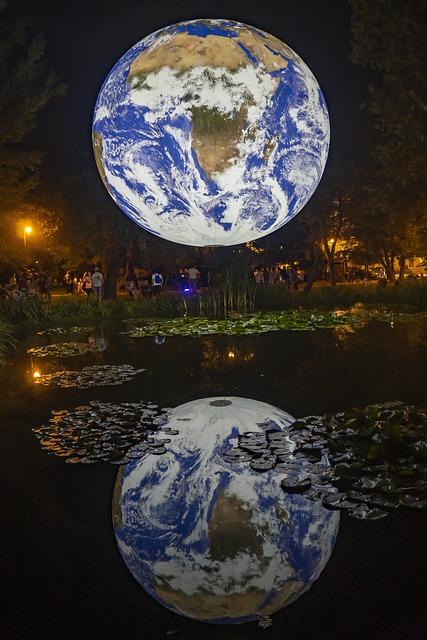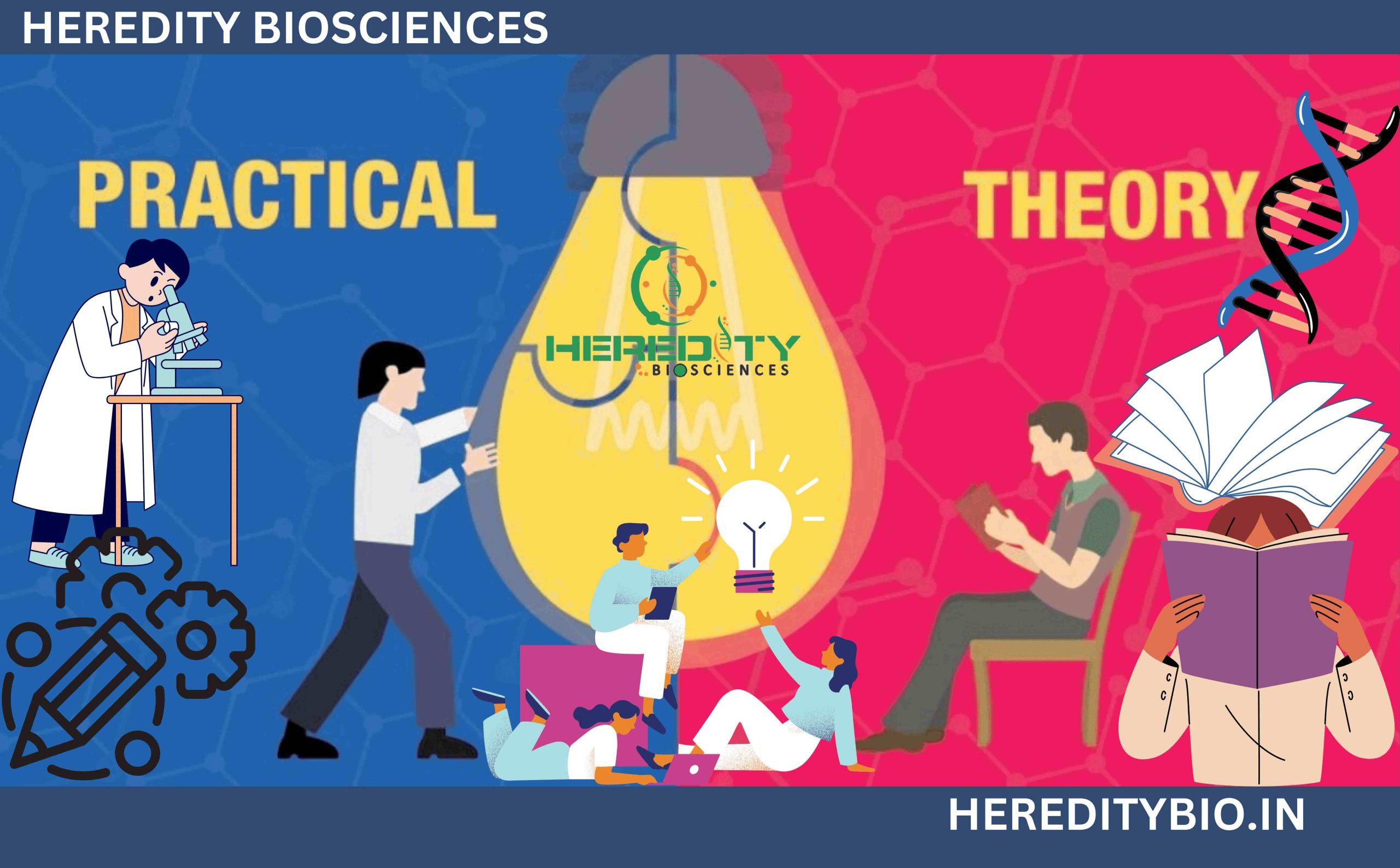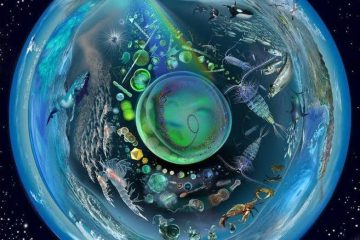Table of Contents
- Understanding the Gaia Hypothesis and Its Key Principles
- The Interconnectedness of Life: How Gaia Sees Earths Systems
- Implications of the Gaia Hypothesis for Environmental Conservation
- Practical Applications: Embracing Gaias Wisdom in Daily Life
- Exploring Critiques and Debates Surrounding the Gaia Hypothesis
- Q&A
- In Conclusion

Understanding the Gaia Hypothesis and Its Key Principles
The Gaia Hypothesis, proposed by James Lovelock in the 1970s, suggests that Earth functions as a single, self-regulating system. This theory challenges traditional views by positing that the biosphere and the surrounding environment interact in a complex web of relationships, maintaining the conditions necessary for life. At its core, the hypothesis presents the idea that living organisms and their inorganic surroundings are closely linked, aiming for a state of balance or homeostasis. This relationship highlights the importance of every species and component within ecosystems.
Key principles of the Gaia Hypothesis include:
- Homeostasis: The ability of Earth to regulate its environment to sustain life, akin to a living organism maintaining steady internal conditions.
- Interconnectedness: All life forms interact with one another and with their environment, forming a complex network that supports the planet’s health.
- Feedback Loops: Positive and negative feedback mechanisms play a crucial role in maintaining the balance of the Earth’s systems.
To better understand its implications, consider the following table that summarizes some key components related to the Gaia Hypothesis:
| Component | Description |
|---|---|
| Atmosphere | Regulated by living organisms, especially plants through photosynthesis. |
| Oceans | Act as a buffer, influencing climate and cycling nutrients critical for life. |
| Soil | Supports plant growth and biodiversity while storing carbon. |

The Interconnectedness of Life: How Gaia Sees Earths Systems
The concept of interconnectedness within Earth’s systems suggests that all living organisms, including humans, animals, and plants, play a vital role in sustaining the planet’s environment. This perspective invites us to view Earth not as a collection of separate entities but as a singular, complex organism. By embracing this holistic view, we can start to understand how our actions and decisions reverberate throughout the entire ecosystem. Recognizing the influence of different factors, such as climate change, biodiversity, and resource consumption, leads us to a more sustainable way of living.
Gaia, as theorized by James Lovelock, implies that life not only exists on Earth but actively contributes to the conditions that make life possible. This can be seen through multiple systems that interconnect in a delicate balance. Key elements include:
- Atmosphere: The blanket of gases that protect and sustain life.
- Hydrosphere: Encompasses all water bodies, influencing climate and habitat.
- Biosphere: The global sum of all ecosystems, where life thrives and evolves.
- Geosphere: The Earth’s physical materials, contributing to soil development and the landscape.
The interdependencies illustrated through the Gaia Hypothesis compel us to think deeply about our impact on the planet. For instance, the relationship between plants and the atmosphere shows how vegetation absorbs carbon dioxide, thus purifying the air we breathe. In contrast, air pollution can adversely affect plant life, which in turn influences various animal species within that ecosystem. Such interactions underscore the necessity of fostering a collaborative spirit among all life forms to maintain the balance of our shared home. Below is a table that summarizes the relationships between these essential Earth systems:
| Earth System | Key Interactions |
|---|---|
| Atmosphere | Regulates temperature and offers protection against solar radiation. |
| Hydrosphere | Supports life, aids in weather patterns, and defines landscapes. |
| Biosphere | Framework for biodiversity and survival across species. |
| Geosphere | Provides minerals and nutrients that bolster ecological systems. |
Implications of the Gaia Hypothesis for Environmental Conservation
The Gaia Hypothesis posits that the Earth functions as a self-regulating system, where living organisms and their inorganic surroundings are interconnected. Understanding this concept can significantly shape our approach to environmental conservation. If we view the Earth as a single organism, it becomes clear that every action we take can influence not just individual species but the entire system. This holistic perspective encourages conservationists to adopt integrated strategies that consider ecological interdependencies rather than isolated efforts.
By acknowledging the intricate relationships among ecosystems, the Gaia Hypothesis underscores the importance of biodiversity. Protecting a wide variety of species is vital for maintaining ecological balance. For instance, the loss of a single species can have a cascade effect, disrupting food chains and leading to further declines in other populations. Conservation efforts must therefore prioritize habitat preservation, Restoration of damaged ecosystems, and the protection of endangered species. This approach not only preserves biodiversity but also strengthens the overall resilience of the planet.
The implications of this hypothesis extend to policy-making and community involvement. Governments and organizations can utilize this understanding to create more effective environmental policies that encourage sustainable practices. Grassroots movements can benefit from adopting the principles of interconnectedness, fostering a sense of community responsibility towards environmental stewardship. By enhancing public awareness and encouraging participation in conservation efforts, we can cultivate a culture of sustainability that aligns with the Earth’s natural processes.

Practical Applications: Embracing Gaias Wisdom in Daily Life
Integrating the principles of Gaia’s wisdom into our daily lives fosters a profound connection with nature and encourages sustainable practices. By recognizing the interconnectedness of all living systems, individuals can adopt habits that contribute positively to both personal well-being and the health of the planet. Simple actions can have far-reaching effects, making it essential to be mindful of our choices. Here are some everyday practices to consider:
- Mindful Consumption: Choose locally sourced and organic produce. This not only supports local economies but aims to reduce carbon footprints.
- Waste Reduction: Embrace the philosophy of ‘reduce, reuse, recycle’. Invest in reusable bags, bottles, and containers to minimize waste.
- Nature Connection: Spend time outdoors, practicing activities like gardening or hiking to deepen your understanding of local ecosystems and their needs.
Another enlightening approach is to implement holistic thinking in daily decision-making. Assess the environmental impacts of choices, whether it’s commuting methods or the products we purchase. Aiccess to information about the origins of items can promote transparency and encourage consumers to align their purchases with their values. Below is a simple table illustrating sustainable commuting options versus their environmental impact:
| Commuting Option | Carbon Footprint per Mile (approx.) |
|---|---|
| Biking | 0 g |
| Walking | 0 g |
| Public Transit | 40 g |
| Carpooling | 120 g |
| Single-Occupancy Vehicle | 400 g |
Ultimately, embracing Gaia’s wisdom empowers individuals to make conscious, informed decisions to nurture both their environment and personal health. Collaborating with others in community sustainability efforts can amplify impact, creating a culture that prioritizes ecological balance. Whether through participating in local clean-ups, educational workshops, or sharing insights about sustainable practices, every step taken helps create a collective movement toward a healthier planet.

Exploring Critiques and Debates Surrounding the Gaia Hypothesis
The Gaia Hypothesis, which proposes that the Earth functions as a self-regulating system, has sparked considerable debates among scientists, environmentalists, and philosophers. Critics argue that the hypothesis can oversimplify complex ecological interdependencies, suggesting an exaggerated degree of harmony in Earth’s systems. While proponents see Gaia as a framework for understanding life’s interactions with the environment, detractors caution against viewing it as a definitive scientific explanation, leading to discussions about its scientific validity and philosophical implications.
Among the key points of contention are the notions of teleology and purpose. Critics highlight that attributing a purpose or goal to Earth’s systems may lead to misunderstandings of evolution and natural selection. The idea of intent, they assert, is anthropocentric and can undermine the role of chance in ecological processes. Furthermore, opponents often express concern about potential consequences of misinterpretation, such as lax environmental policies based on the belief that nature will always correct itself. These assertions have led to extensive analysis and reevaluation within scientific circles, resulting in a more nuanced understanding of ecological dynamics.
Despite the critiques, the Gaia Hypothesis has undeniably influenced various fields—including ecology, climate science, and even social sciences. It has prompted essential discussions around sustainability, climate change, and humanity’s interaction with the environment. Some scholars propose integrating aspects of the Gaia theory into environmental ethics, arguing that recognizing the interconnectedness of life and Earth can foster a deeper sense of responsibility. The ongoing dialogue around this hypothesis continues to evolve, showcasing the complexity of Earth’s systems while also inviting diverse perspectives and methodologies into the discourse.
Q&A
Q&A: Understanding the Gaia Hypothesis Simplified
Q1: What is the Gaia Hypothesis? A1: The Gaia Hypothesis proposes that Earth itself functions as a single, self-regulating system. This theory suggests that the biological and physical components of the planet—like the atmosphere, oceans, and land—interact to maintain conditions conducive for life. In essence, it views the Earth as a living entity where all organisms play a part in sustaining the ecosystem.Q2: Who came up with the Gaia Hypothesis? A2: The Gaia Hypothesis was popularized by British scientist James Lovelock in the 1970s. He collaborated with microbiologist Lynn Margulis, who helped to develop the idea by emphasizing the role of microbial life in maintaining Earth’s balance. Together, they encouraged a perspective that considers the interconnectedness of life and the environment.
Q3: How does the Gaia Hypothesis work in practice? A3: The hypothesis suggests that natural processes—such as the regulation of atmospheric gases, ocean salinity, and temperatures—are influenced by living organisms. For example, plants absorb carbon dioxide and release oxygen, playing a pivotal role in maintaining the balance of gases in the atmosphere. Such interactions help sustain conditions that are favorable for life.
Q4: Is the Gaia Hypothesis scientifically proven? A4: While the Gaia Hypothesis has gained support as a conceptual framework, it remains a subject of debate in the scientific community. Some researchers appreciate its holistic view of Earth systems, while others argue that it oversimplifies complex interactions. Despite this, it has inspired valuable research in ecology and Earth sciences, encouraging a deeper understanding of feedback mechanisms.
Q5: What are the implications of the Gaia Hypothesis for climate change? A5: The Gaia Hypothesis draws attention to the impact of human activities on Earth’s self-regulating systems. As our actions disrupt natural processes—such as deforestation, pollution, and carbon emissions—we risk destabilizing the delicate balance that sustains life. By recognizing our role within this system, the hypothesis encourages sustainable practices that can help restore and protect the environment.
Q6: How can I apply the Gaia Hypothesis in my daily life? A6: Embracing the principles of the Gaia Hypothesis in your everyday life involves recognizing the interconnectedness of all living things. You can make small changes, like reducing waste, conserving water, supporting local ecosystems, and choosing sustainable products. Each action contributes to the health of the planet and reinforces the idea that we are all part of a larger, living system.
Q7: Is the Gaia Hypothesis relevant today? A7: Absolutely! The Gaia Hypothesis remains highly relevant, especially in discussions about climate change, environmental conservation, and biodiversity. It encourages us to view the planet through a lens of interconnected systems, driving home the urgency for collective action in preserving the Earth for future generations.—Feel free to dive deeper into this fascinating concept and explore how our actions can ripple through the larger tapestry of life on Earth.



0 Comments